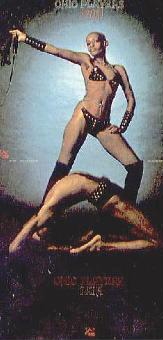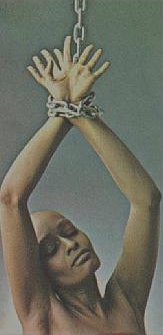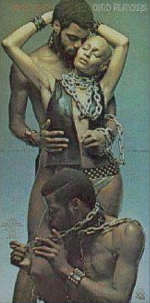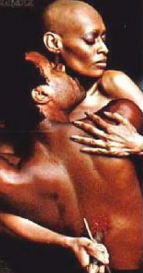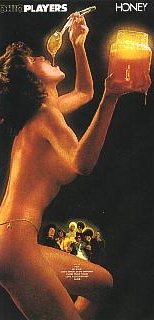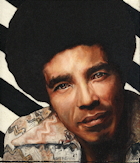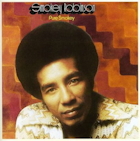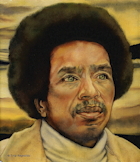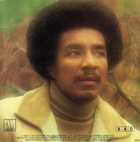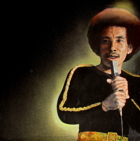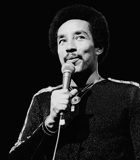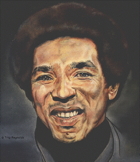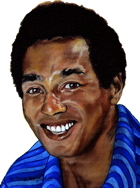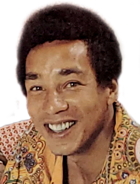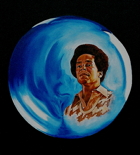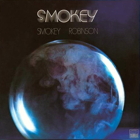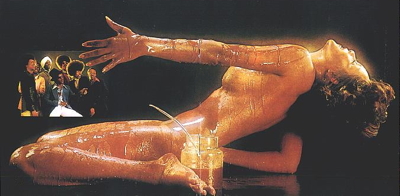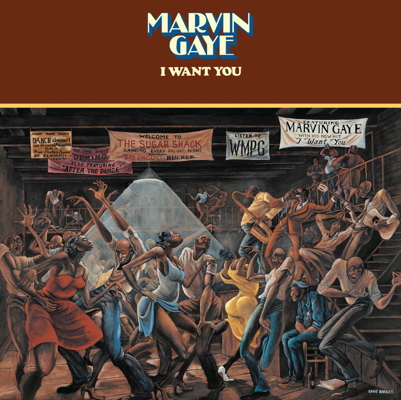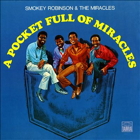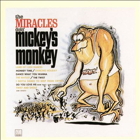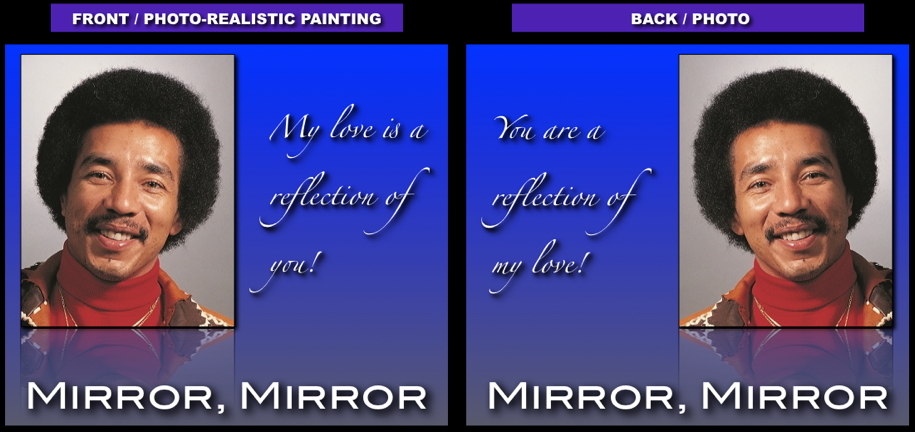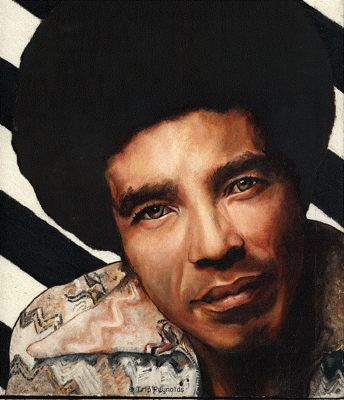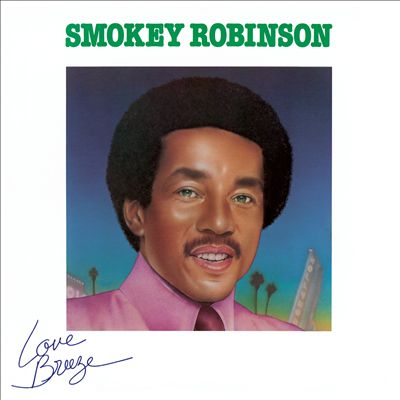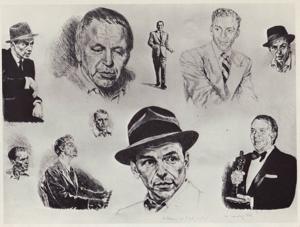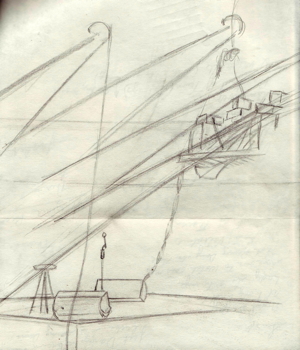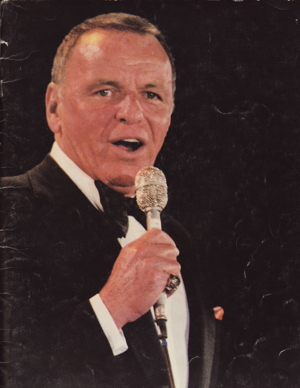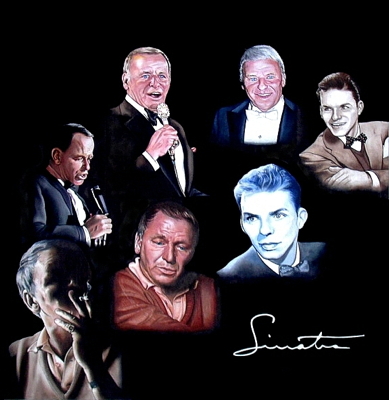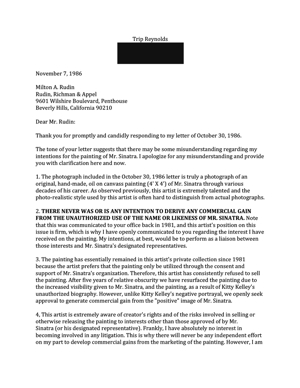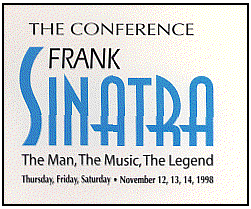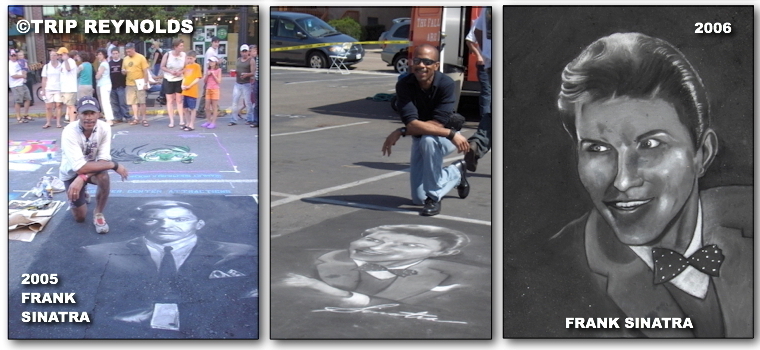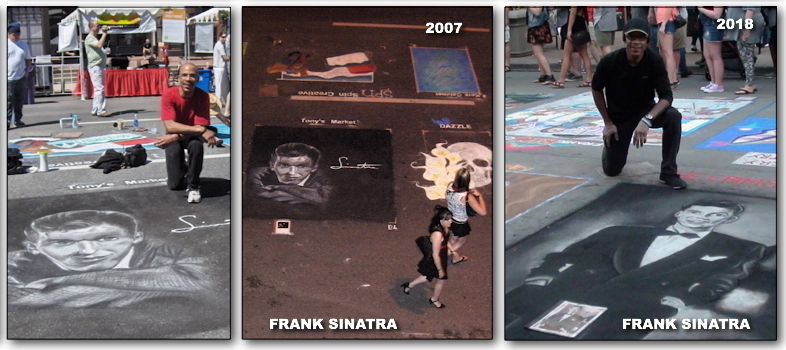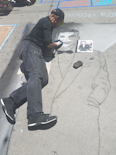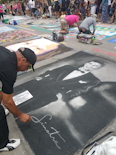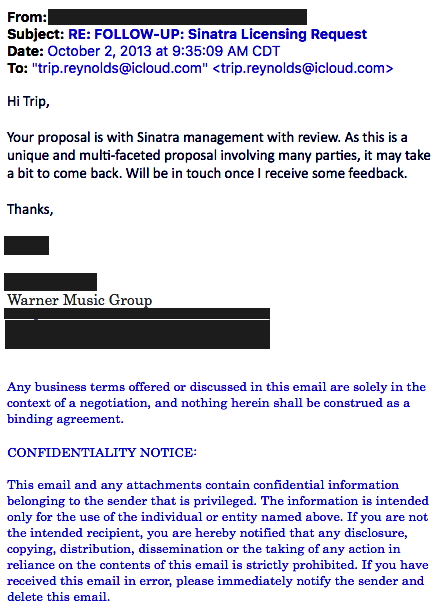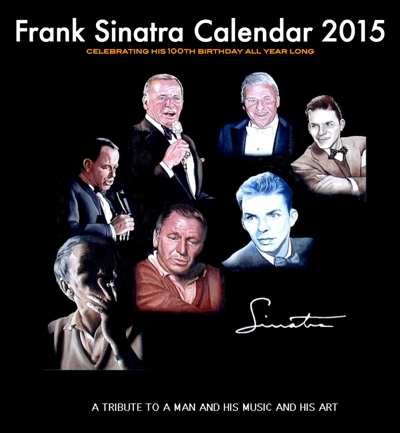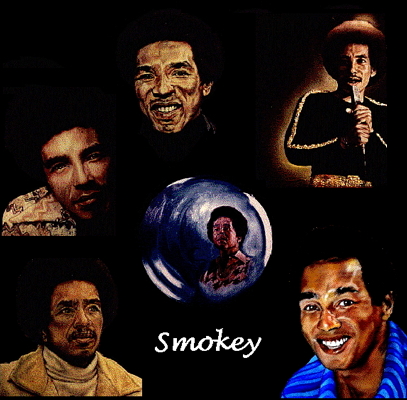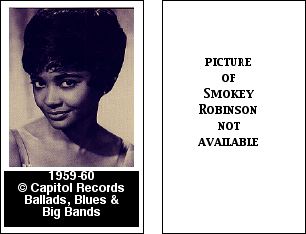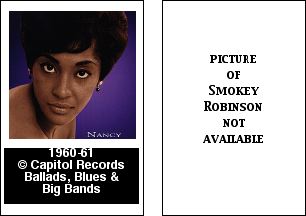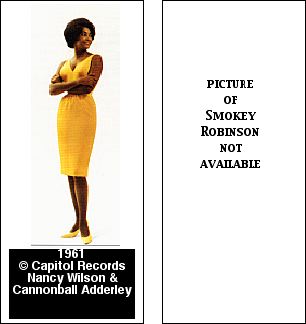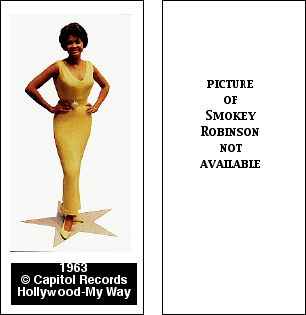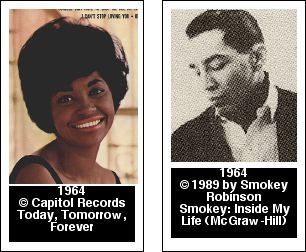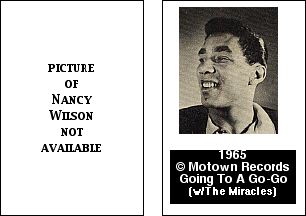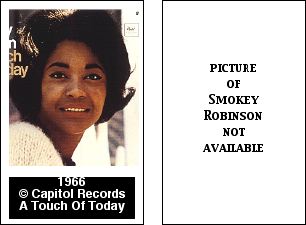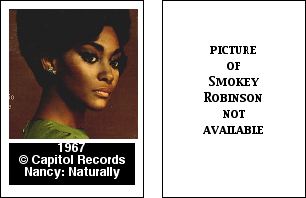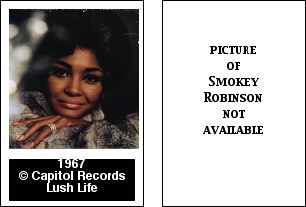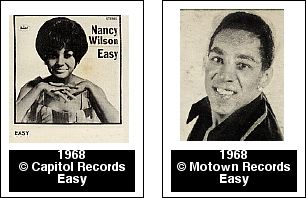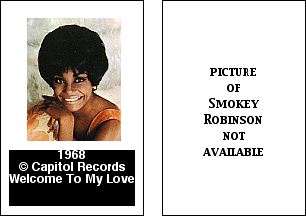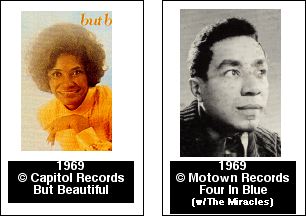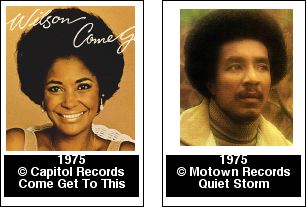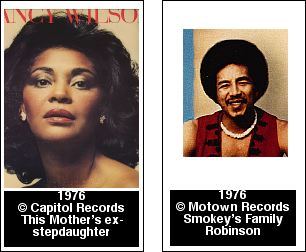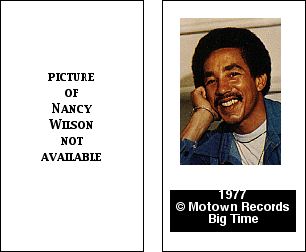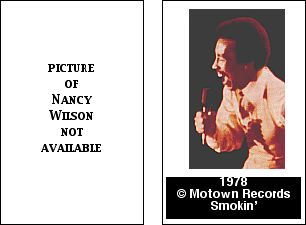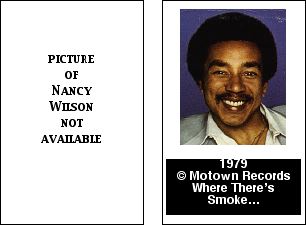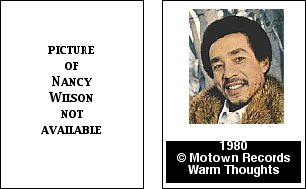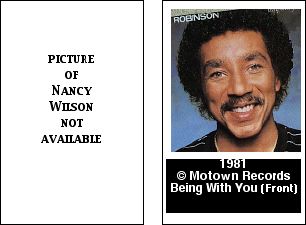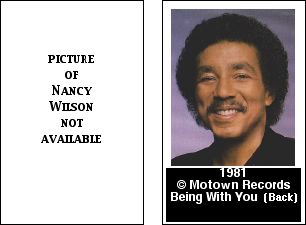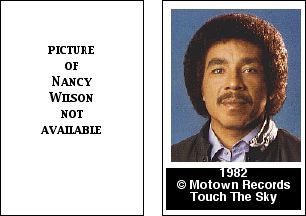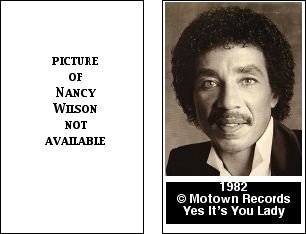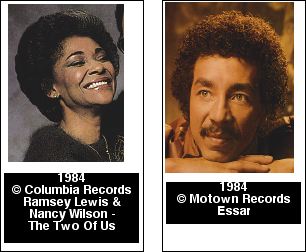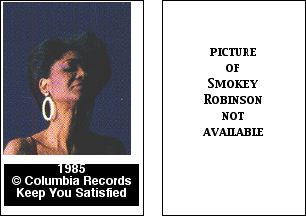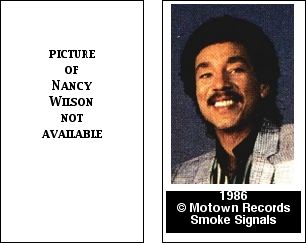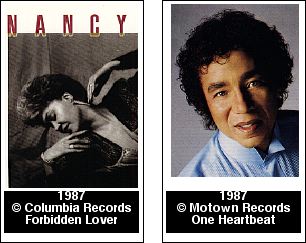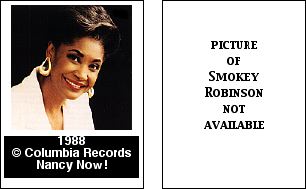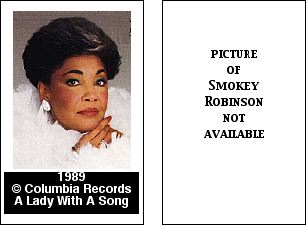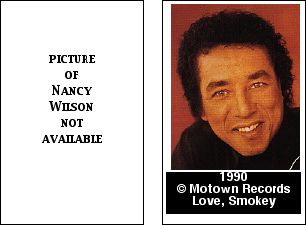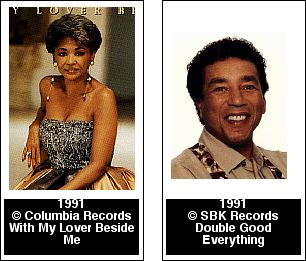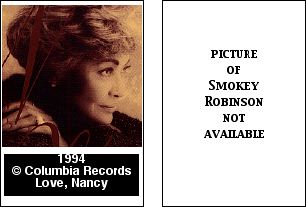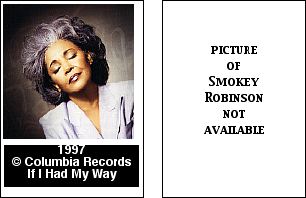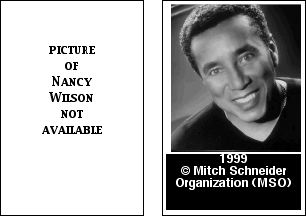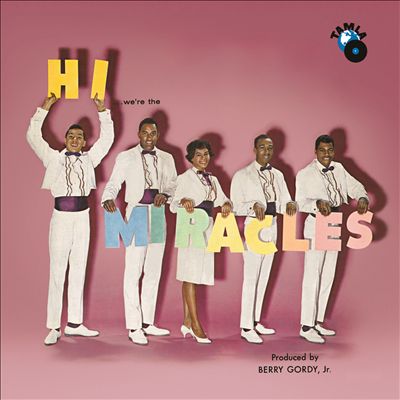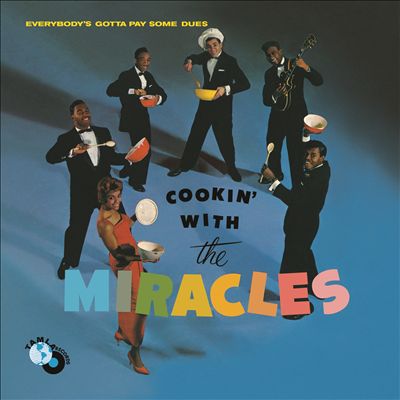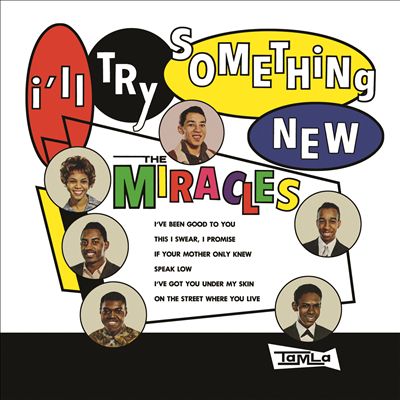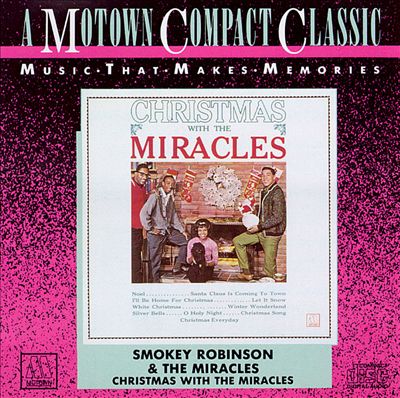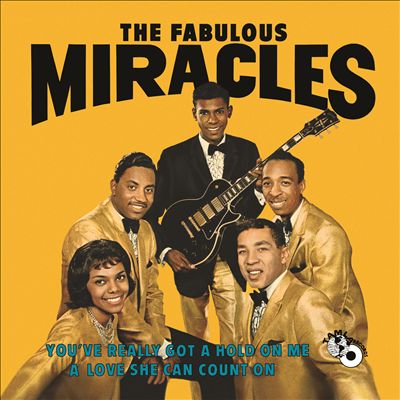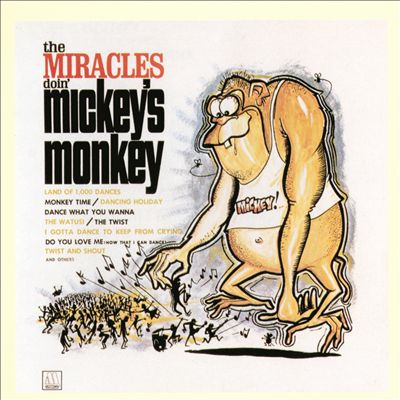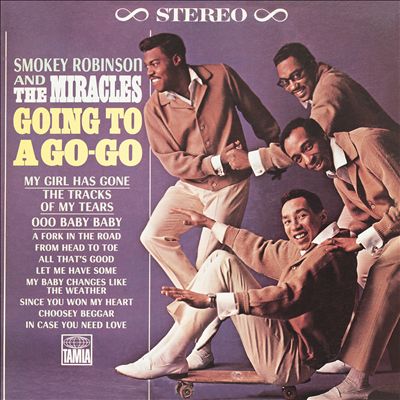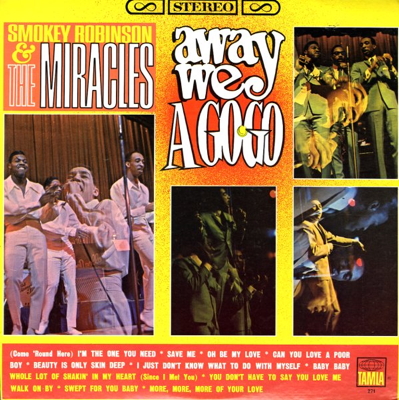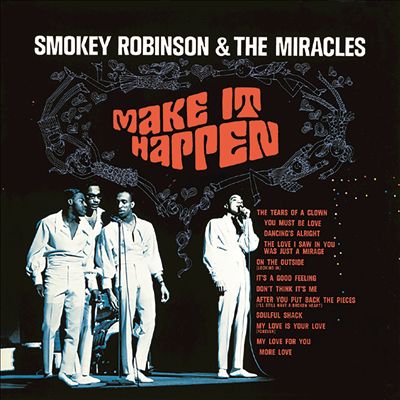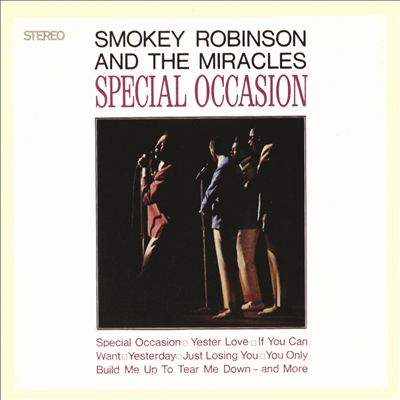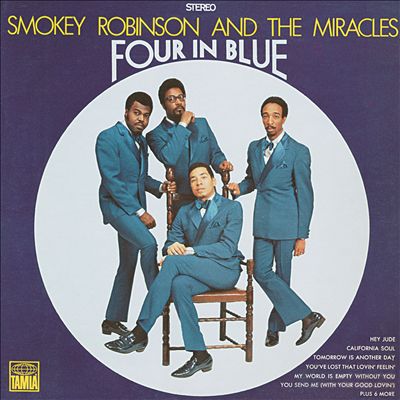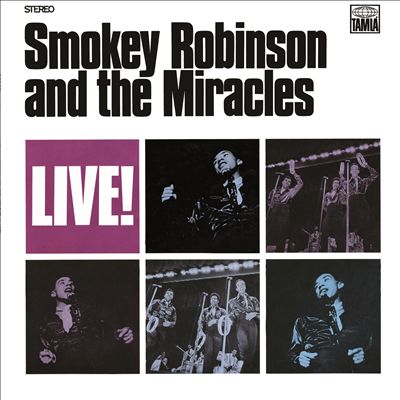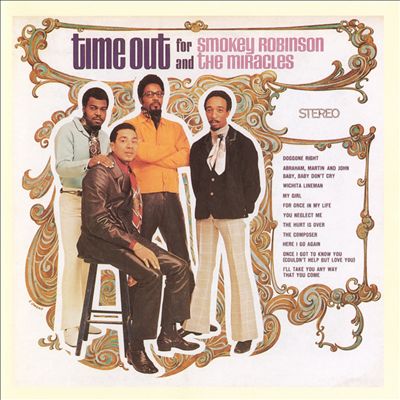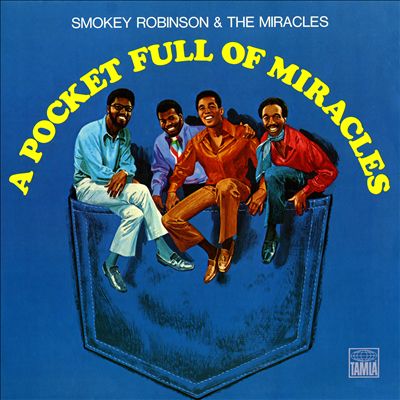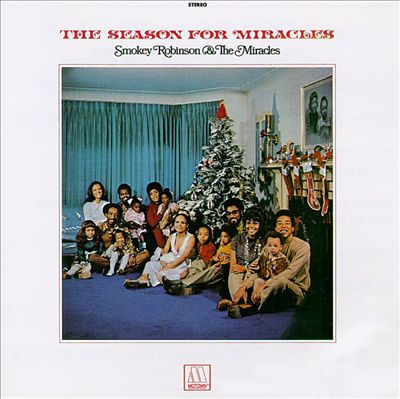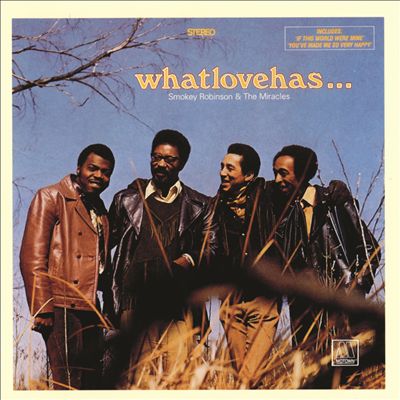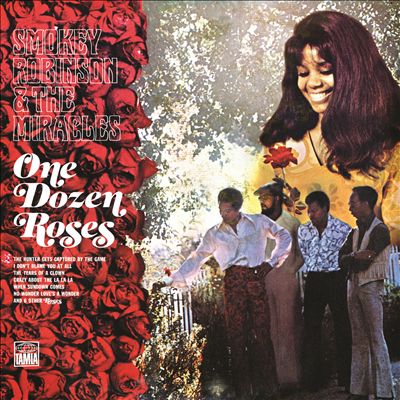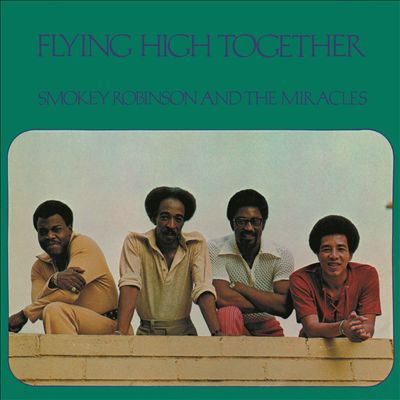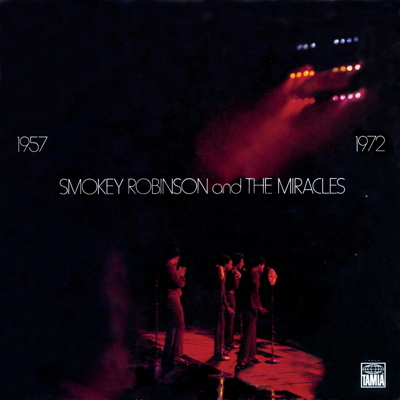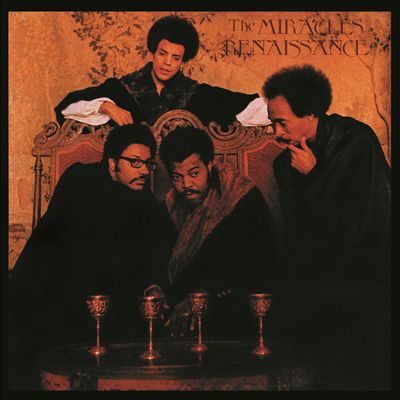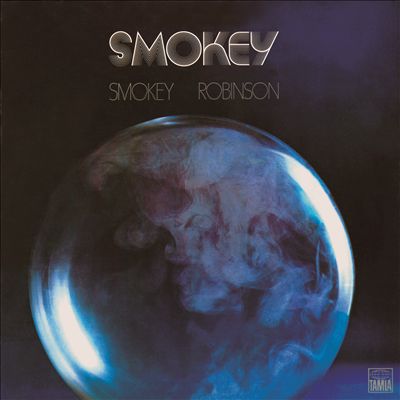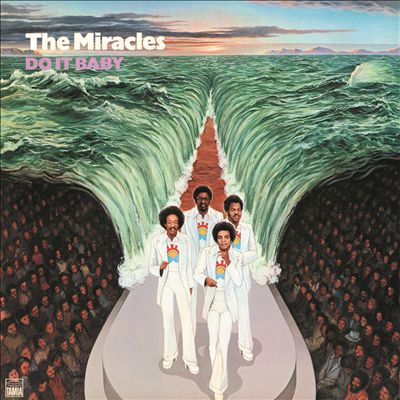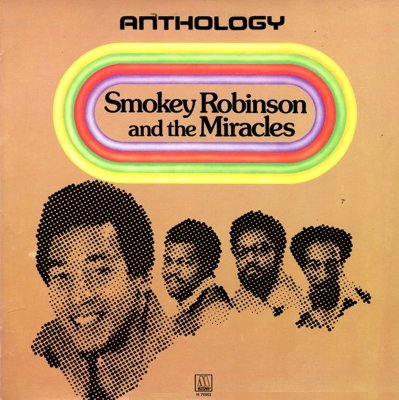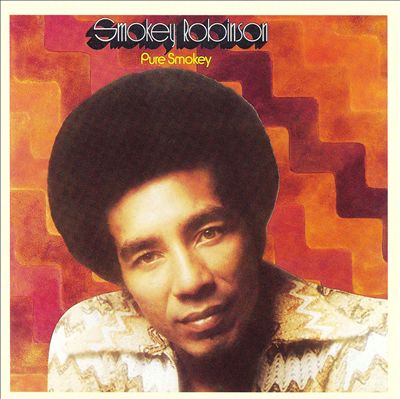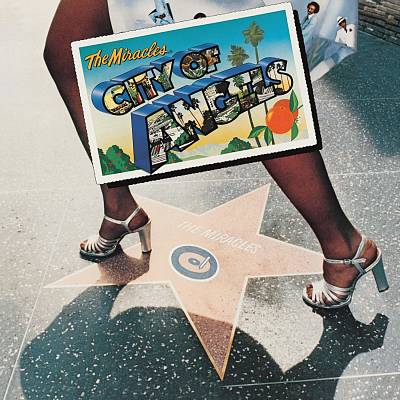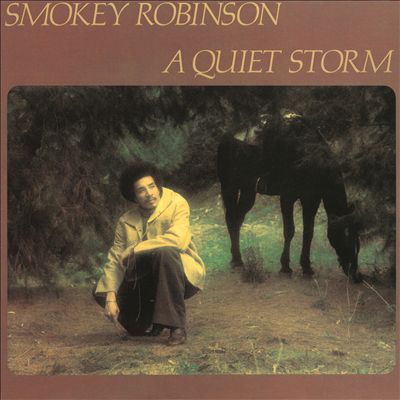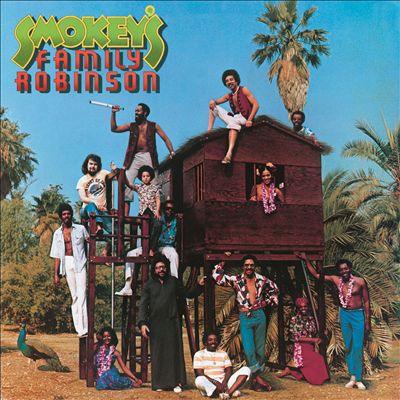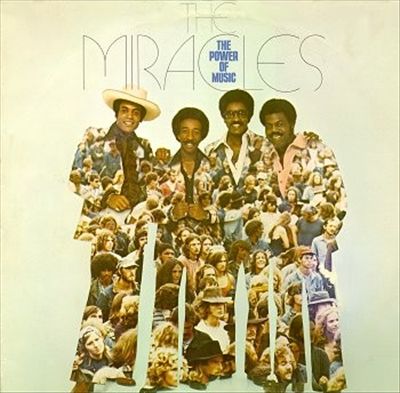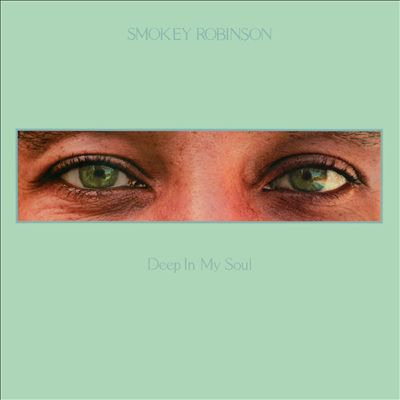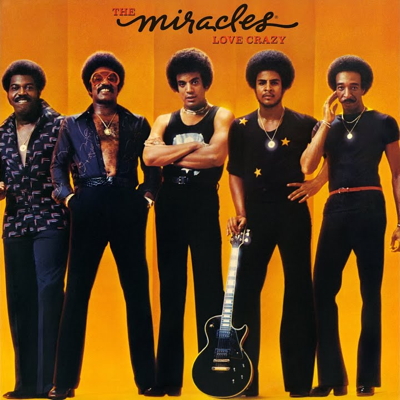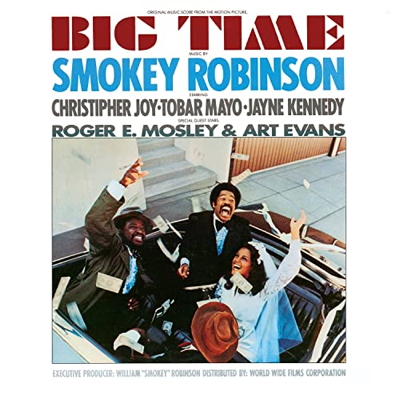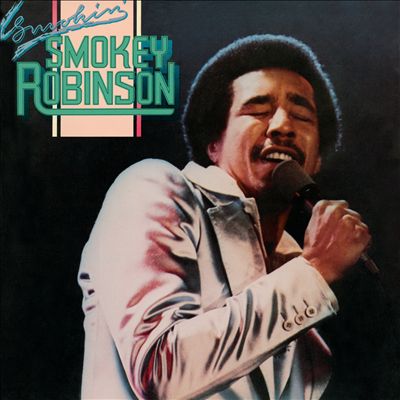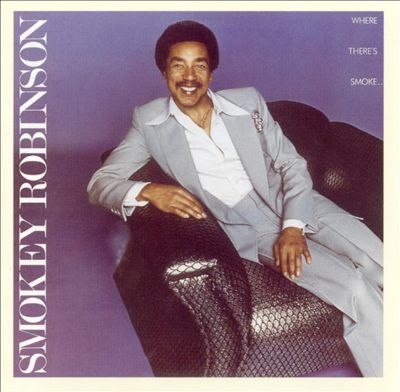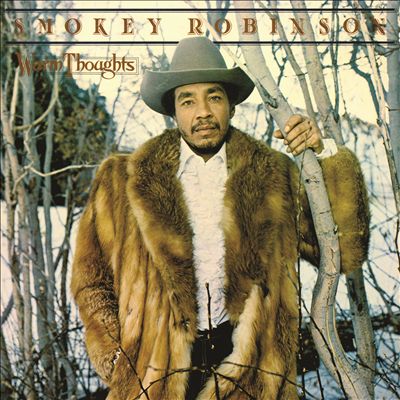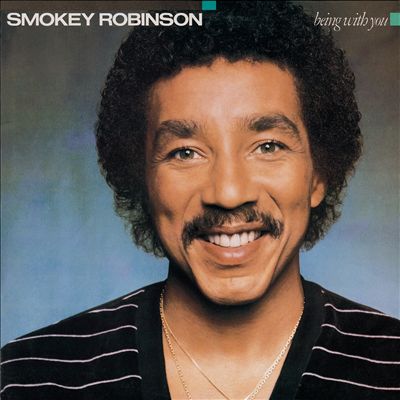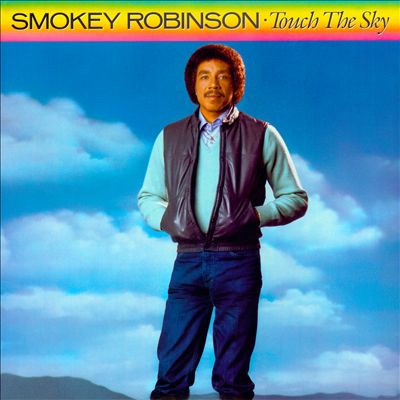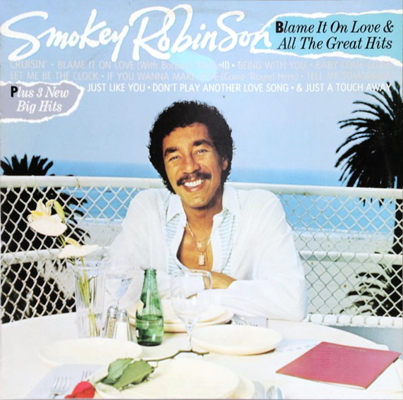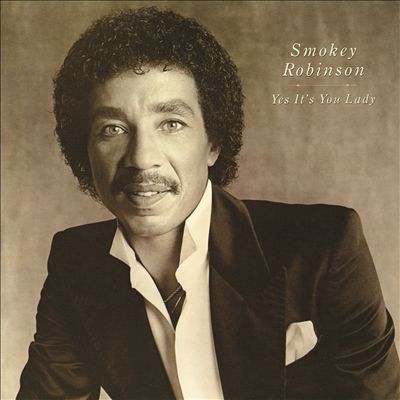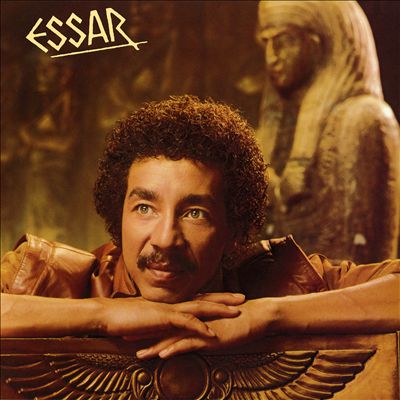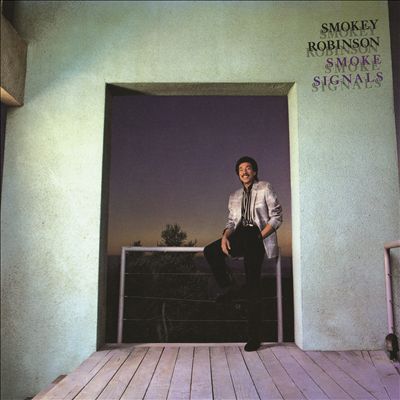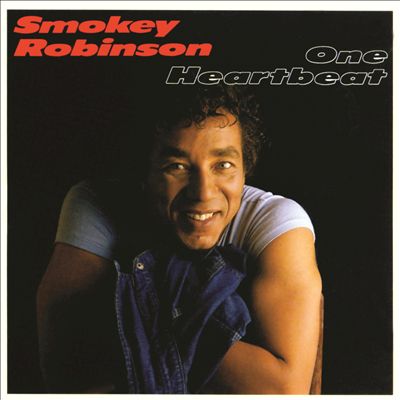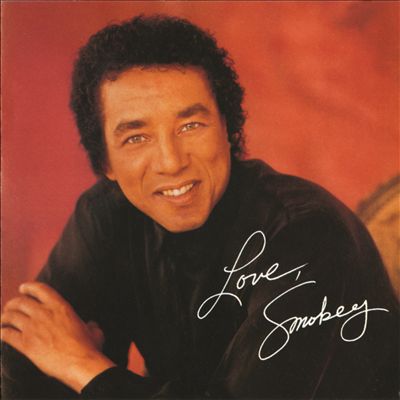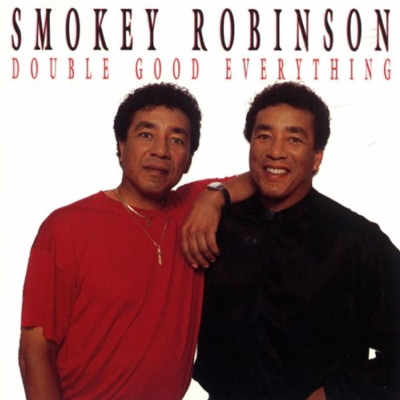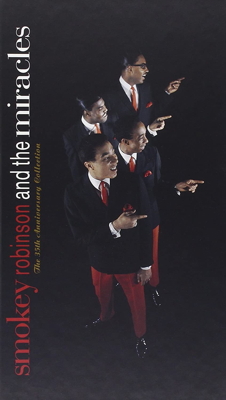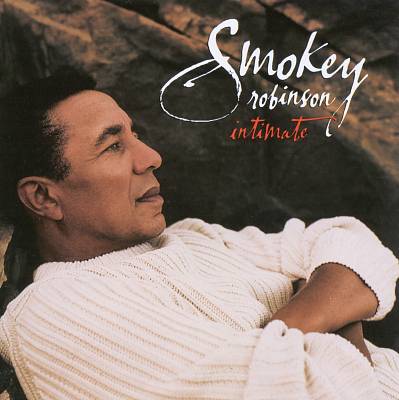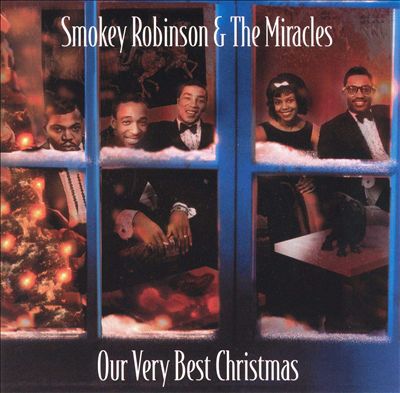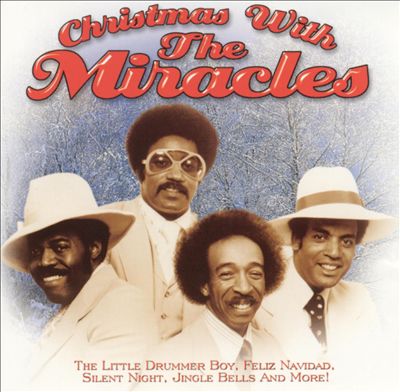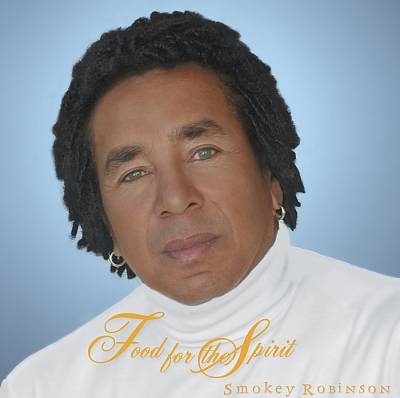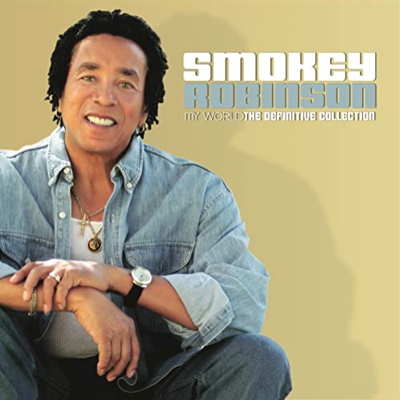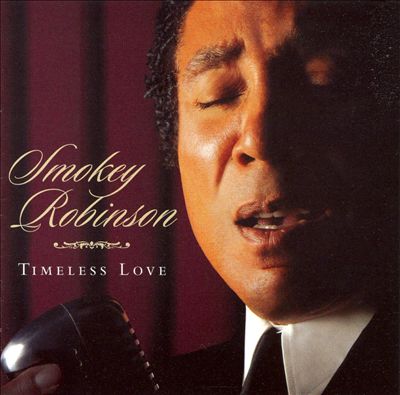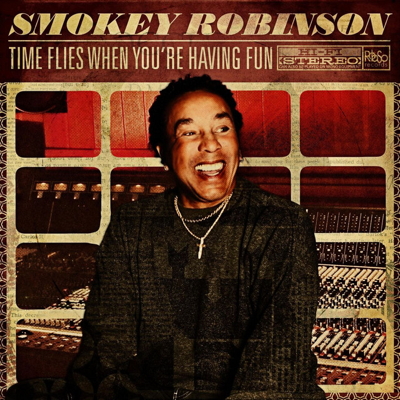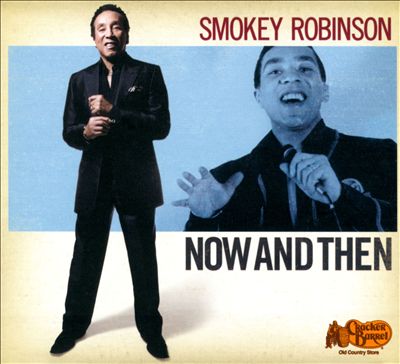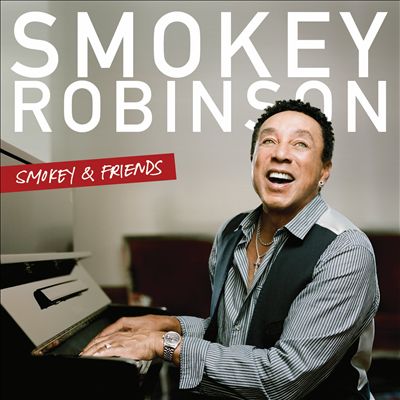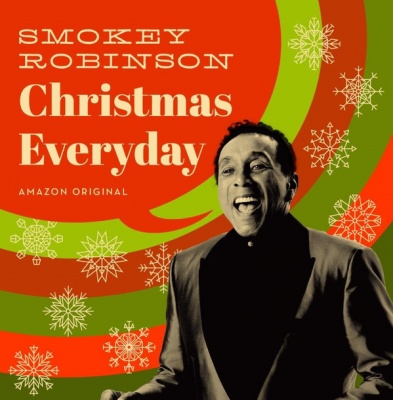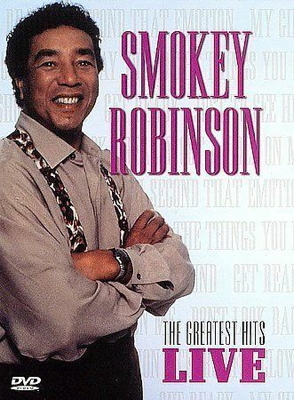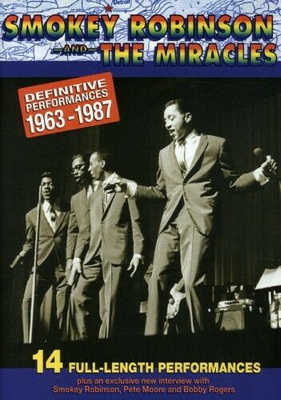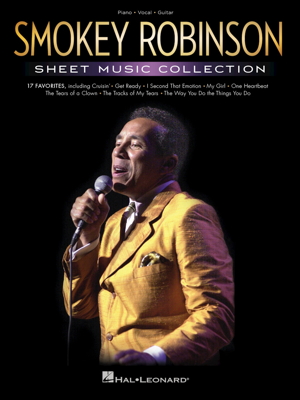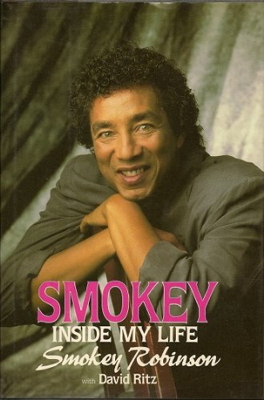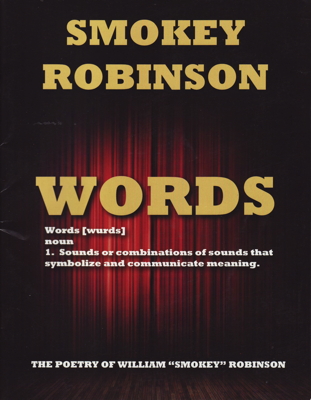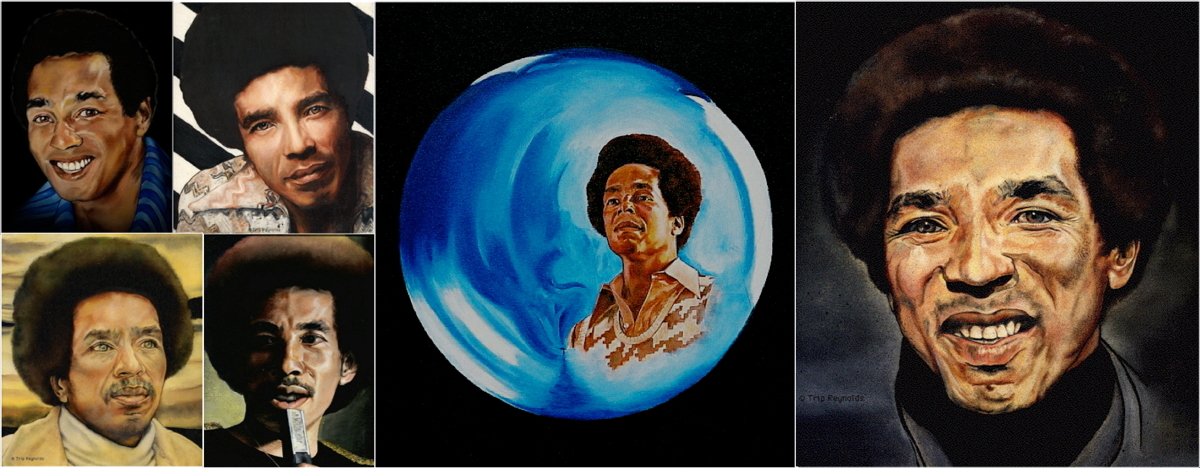Smokey Robinson's Lost Opportunities?
Over the course of several decades, Smokey Robinson lost out on several opportunities to work with me. What? Oh, perhaps you think because Smokey Robinson is the "big star," that the real "opportunity" is for me to work with him. (Ha! Ha! Ha!) Clearly, you don't know me.
Other than being a fan of Smokey's talent as an exceptional singer, lyricist, and composer, what kind of personal or professional relationship could I possibly have, do I have with Smokey Robinson? Answer: None.
BACKGROUND: Shortly after Berry Gordy launched Motown, I quickly became a big fan of its extremely talented roster of artists, especially Mary Wells (My Guy) and The Temptations (My Girl). In particular, the genius of "My Girl" was just too much to ignore, with that powerful bass guitar intro, and so beautifully arranged with horns, violins and counter-balancing melodies, and David Ruffin's soaring vocal that I immediately started paying attention to who actually wrote the songs, and the liner notes lead me directly to Smokey Robinson. I was greatly impressed that: (1) his songs did not sound all-the-same; (2) he writes "smart" lyrics; (3) he writes with passion and respect for women; (4) his ballads are very melodic, captivating, with great hooks; and (5) most importantly, Smokey sounds the same "live" in concert as he does in his studio recordings. Plus, like many people, in reflection to my own vanity, he sings the way I would sing if provided an opportunity. Over fifty-(50) years later, all of the aforementioned remain true to this very day.
I also liked that "The Miracles" were esentially a family with Smokey Robinson, Warren "Pete" Moore, and Ronnie White singing together since they each were around the age of eleven, and that Claudette Rogers and Bobby Rogers were cousins, and that Claudette and Smokey married shortly after forming The Miracles.
I learned many things about the "music business" by following Smokey Robinson's career, which suprisingly not only increased my interest in The Tempatations, but also significantly increased my interest in Frank Sinatra, Shirley Bassey, and especially the careers of singer-songwriters like Barry White, Barbara Mason, Ted "The Wizard" Mills, Carole King, Stevie Wonder, Ashford and Simpson, Eugene Record, The Isley Brothers, Isaac Hayes and so many, many more.
Like many people, as my appreciation for Smokey's music increased, my purchase of his music also increased, which included buying music of other artists who recorded songs written by Smokey Robinson. So, yeah, I've purchased a helluva lot of Smokey's music. Then, in my late teens I contemplated various career options for a college education, but racial discrimination prompted me to switch my major from medicine, then to architecture, and finally to commercial art. As a result of my drawings like "this" as a fourth grade student at Dunbar Elementary School in Wichita, Kansas I received an art scholarship when I was ten-(10) years old to attend weekly classes at Wichita State University for two years; so, I decided to pursue a career as an artist. Looking back, I should have become a medical doctor with a focus in sports medicine, but sports medicine did not exist as a specialty in the late 1960s. Ultimately I found academicians in art departments just as racist, or as told to me by White students (I didn't ask; I've always been an introvert; and I was always the only person of color in all of my art classes), perhaps they were intimidated by this young, self-taught Black male.
Nevertheless, I needed a subject to demonstrate my artistic skills, and with drawing and painting being such time-consuming activities I wanted a subject that would command both my "auditory" and "visual" interest. It's always been my practice to listen to a single song or a single album for hours and hours, sometimes an entire day, or weeks at a time, which is why my knowledge of the music industry and my knowledge of Smokey Robinson's music cataloge is so robust. As represented by my original oil-on-canvas paintings on the left margin below, Smokey Robinson was my ideal subject! So, with regard to Smokey Robinson's entire music catalog, as I do with every recording artist, I read the liner notes in great detail to discover who produced, arranged, wrote the songs and lyrics, played the instruments, sang lead and background, where the album was recorded, who was the production engineer, are the performance right covered by ASCAP or BMI, and more!
Even if I wasn't a visual artist, I'd still recognize the connection between visual art and musical art, because they inspire each other, just like the human body is inspired to move and dance when music is played.
My painting Original Photo Before and after graduating from college with a BA degree in commercial illustration, my ultimate objective was to work for Motown, in the art department, designing album covers, and perhaps, secure an opportunity to become a recording artist. After graduating in 1974, I was living in Chicago, Illinois, but Motown had relocated from Detroit to Los Angeles, and I lacked the financial resouces to move to California.
However, I wasn't that concerned because like New York and Los Angeles, Chicago was and is a major media center, so I actively pursed, developed contacts, and interviewed with the following Chicago-based media (publishing, radio, television, film, public relations, etc.). which included:
Some of the nation's largest advertising agencies, including Leo Burnett, J. Walter Thompson, and Fuller, Smith & Ross
Johnson Publications, the nation's largest Black-owned publisher (Ebony, Jet Magazine, etc.), where I received contact information for many artists, including A&R (artists and repertoire) staff working with Don Cornelius' Soul Train, and who provided me with nearly four-(4) dozen publicity stills, such as the photo (at right) of The Miracles, for me to use as source material.
Curtom Records, owned my Curtis Mayfield and Eddie Thomas, where I met with Thomas, and artists Leroy Hutson, Joe Reaves, and Donny Hathaway.
Brunswisk Records, where I met with record producer Carl Davis, and many label artists including Gene Chandler, Eugene Record and The Chi-Lites, The Impressions, Jerry Butler, etc., and
Album Graphics, Inc (AGI), previously the nation's largest publisher of album covers, and the genius behind those legendary album covers (below) for the Ohio Players.
PAIN PLEASURE ECSTACY CLIMAX HONEY ss
ORIGINAL NOT AVAILABLE
ORIGINAL NOT AVAILABLEUnfortunately, throughout the mid-to-late 1970s, the Oil Embargo had an atrocious impact on the U.S. economy, it crippled the U.S. automotive industry as cars sales dropped by nearly 50%, which had a domino effect on advertising agencies that produced fewer commercials, and television stations that broadcast fewer commericals, and newspapers and magazines that printed fewer advertisements, and a twenty-two year old (me) who couldn't even land an entry level job as a graphic or commercial artist. The starving artist crap didn't work for me, doesn't work for me, and whether you like it or not, an "unemployed" Black man is always considered as a failure, a piece of shit, and this stereotype is perpetual and pervasive. Therefore, for income I worked as a principal's assistant at an elementary school in south Chicago for a couple of years, until 1977 when I eventually got hired as an Employee Compensation Specialist for a major insurance company in metro Chicago. I've always had very good math skills, so managing compensation budgets came easy, and human resoureces became my only regular full-time professional vocation. However, I've been an active freelance artist . . . my entire life, and my freelance interests also include writing (editorials, film reviews, poetry), videography, photography, web site deisgn, and of course, music.I
It was while working as a freelance artist I also reached out to a short list of Black-owned companies that promoted their own collection of Black artists like Golden State Mutual Life Insurance, but found these companies were more interested in supporting "African" art or historical art of Black artists, but not the work of contemporary "living" Black artists such as myself. I also reached out to Sammy Davis, Jr., and I met with and/or submitted drafts to Chi-Sound, Donny Hathaway, Phil Upchurch, Gene Chandler, Eugene Record, Simtec, Leroy Hutson, and many more. Although Philadelphia International Records was not interested in working with me at the time, nevertheless, they were kind to respond, and they provided me with contact information for their entire roster of talent.
I became aware of Chicago area art shows and was subsequently invited to participate in the 1982 Black Esthetics Festival at the Museum of Sciene and Industry. I sent letters (below) announcing my participateion to several dozen media executives and music artists, including Eugene Record at Chi-Sound Records, George Johnson at Johnson Products, June Rhinehart at Johnson Publishing, and Earl Graves at Black Enterprise.
Again, my plan was to get a job, save money, produce a dynamic portfolio targeted for Motown (and other record companies), secure an on-site interview with Motown, and move to California. However, I could never live there permanently, because my conservative lifestyle and values won't work there. Plus, knowing what I know now about California, I'd never be a permanent resident.
Given all of the aforementioned, I was multitasking between working a regular job and freelancing, which brings me to how Smokey lost out on three-(3) opportunities to uniquely blend visual art with musical art.OPPORTUNITY 1: Blending Art and Music!
1. With the release of Marvin Gaye's "I Want You" album (at right) in March 1976, with cover art by the extremely talented Black artist Ernie Barnes, Motown uniquely established a connection between "visual art" and the art of "music."
Given sensual album covers released by Jimmy McGriff, Julie London, and the Ohio Players . . .
I considered pitching a series of original album covers equally if not more sensual.
1963 I had an album concept idea for Smokey's next album, which I tentatively entitled, "Mirror, Mirror," that was far more adult, positive, and very serious about love and commitment. The theme for all songs would be how love is "reflected" to and from people who love each other! The images below were not final specs, but were for presentation of concept only; unfortunately, I never received approval to "pitch" my idea, so I never sent anything to Smokey or Motown. By the way, I also wrote a couple of songs to pitch to Smokey for this concept album. Meanwhile . . .
3. I eventually tracked down the person handling A&R for Smokey Robinson's appearance at the 1976 Budweiser Superfest in Milwaukee, Wisconsin. I was told to wait at the artist entrance and that Smokey "might" see me after his performance. My girlfriend and I waited about 90-minutes, then received word Smokey would meet with me.
I met with Smokey Robinson face-to-face, with my girlfriend standing right next to me, and I showed him my original paintings of him to validate my artistic skills, and I conveyed my desire to at least produce, at no cost, a draft for a possible album cover . . . what did Smokey Robinson do?
4. I'm standing directly in front of Smokey, looking directly into his green eyes as he told me I need to talk with Motown's art director, Glen Christensen, with whom I was already aware and had previously sent a letter.
Of course, I followed-up with Mr. Christensen and other staff at Motown, but I never received a response to my request. Then, in 1978, Smokey released a plastic-looking airbrush portrait as cover art (below) for his album, "Love Breeze."5. In 1978, while buying music at the Rolling Stone music store in downtown Chicago, I noticed at least two, maybe three crates, each at least three-(3) feet deep containing LPs only by Frank Sinatra. I'd never seen so much "product" for only one individual. I always liked Sinatra, but, wow, I didn't know he had recorded so much music. I immediately purchased two albums, and started playing Sinatra's music more any other artist. When I discovered Sinatra would soon be performing in Chicago, I quickly purchased a ticket (that's right - I went to the concert all by myself) and had a great seat not from from the stage.
(like always), and before the
concert began I started
the sketch below . . .
6. In 1980, with no feedback from Smokey Robinson, I created an original oil-on-canvas, 4' by 4' portrait of Frank Sinatra (at right), and inquired about licensing the artwork for an album cover or possibly for fund raising calendar. Frankly, I only produced this painting after becoming unemployed from a major insurance company in metro Chicago. At the time, my "significant other" strongly encouraged me to work as an artist full-time, but I respond, "That starving artist crap doesn't work for me. You remember what happened to me at NIU, and how I couldn't even get an entry level job for over a year during the oil embargo. So, are you going to support me financially?" There was immediate silence, then as she turned and walked away she said, "Come on, Trip, at least give it try, for a little while."
I chuckled internally, because I knew she had absolutely no stomach, nor did I, to live "free" off of anyone. Bottom line, just because I don't work full-time as a graphic artist doesn't mean I gave up on art, which I've demonstrated throughout my life. Meanwhile . . .
It took me about three-(3) weeks to complete my career spanning portrait of Frank Sinatra, and upon completion, I promptly began making contacts to discover options, and acquire permission, for "multimedia" use of the painting.
Eventually, a contact at Sinatra's record label, Reprise Records, directed me to Sarge Weiss at Sinatra Enterprises.
Unlike Motown, I immediately received a "cease-and-desist"
warning letter feedback from
Mr. Sinatra's attorneys.I promptly responded, correcting them of their error, because I clearly and properly initiated contact to formally request permission. Sinatra's attorney acknowledged my letter of May 27, 1981, and that there was no interest at that time. Sinatra's public relations representative thanked me for alerting their office. In response to Kitty Kelly's negative book about Frank Sinatra's career, I contacted Sinatra's attorney, Milton Rudin, about the possibility of using my painting to "promote a positive image" of his career. Rudin responded . . .
I promptly responded, correcting Rudin of his error, and made a counter-offer that permanently established the veracity
of my intent.
Without admitting his error,
Rudin's tone was no longer
negative, and subsequent
communications have been
open, professional, and positive.
In 1997, I reached out to the
Official Smokey Robinson Fan Club, who responded they had no contact with the artist.In February 1997,
Hofstra University issued a
"CALL FOR PAPERS" to historians, academicians, entertainers and all persons interested in commenting
on the cultural impact of Frank Sinatra's career.Frank Sinatra died on
May 14, 1998.
Shortly after Frank Sinatra's death, my paper was one of a select few chosen for presentation at
"The Frank Sinatra Conference"
on Friday, November 13, 1998.
In 2003, I started participating in street art or chalk art festivals, which are typically conducted as large fundraising events for charitable organizations, attracting thousands and thousands of "foot traffic" of all ages. Instead of reproducing classic European art or animated characters, eventually I decided to do a character study of Frank Sinatra, primarily to: (a) remind adults of Frank Sinatra's career; and (b) for those unaware of Frank Sinatra, to prompt them to ask me and generate interest. I produced freehand illustrations of Frank Sinatra in 2018, 2007, 2006, and 2005.
Unlike traditional print-based calendars that focus only on visual images, the Frank Sinatra 100th Anniversary Calender was designed with diverse print-based, community-based, and online cross-marketing opportunities strategically designed to:
1. Serve as a platform to market the talent of Frank Sinatra to his existing fan base;
2. Serve as a platform to market the talent of Frank Sinatra to new audiences (increase the fan base);
3. Continuously encourage the sale of Frank Sinatra merchandise (CDs, videos, paintings, posters, etc.);
4. Provide direct cross-marketing tie-ins to sell Sinatra's extremely robust music library via BMG/RCA, Sony/Columbia/Legacy, Capitol, and Warner Reprise;
5. Provide vendor support;
6. Generate fund raising opportunities 365 days of 2015, 24 hours a day, 7 days each week; and
7. Serve as a "licensable" fund raising tool for other K-12 "school of the arts" domestically and internationally.
Artistically, to capture the tone and atmosphere of Mr. Sinatra's career, all images will be linked to one of two themes, the "Career Scope" or "Artistic Legacy" of Frank Sinatra.
The dominant "showcase" images for each month would be produced as original, photo/realistic, oil on canvas paintings by "celebrated visual artists," which would also be available as limited edition prints and posters.
A cross marketing cell containing three-(3) images appear at the top of each page to:
Image 1: promote the sale of exclusive photographs of Frank Sinatra ("A Man");
Image 2: promote the sale of Sinatra's music ("His Music"); and
Image 3: promote the sale of Sinatra's original paintings ("His Art").
I received permission to submit an official business proposal, projected to generate $2,274,700 USD, and I produced a "proof of concept" web site.
On November 4, 2013 at 3:37 PM I received the following feedback:
Hi Trip, Hope you are well. I’m sorry I haven’t been back to you with feedback sooner. We really appreciate your interest and detailed proposal but are going to pass on this for the moment. I’ll be in touch if anything changes. Best,
7. Meanwhile, getting back to the early 1980s, I followed-up with Motown, but as usual, I found it to be the company practice to pass the buck, and never actually respond to my request to produce drafts for album covers and/or to pitch ideas for album covers.
Therefore, given the growing popularity of calendars supporting Black History Month, and the burgeoning inclusion of Black people on televison via TV Guide (1981), and the work of Black visual artists in corporate collections at Black Enterprise (1980), Johnson Publishing (1980), Johnson Products (1981), Johnson Products (1983), etc., I wanted to try something new with Motown. Although a normal business media "pitch" is no more than a sentence or two, which Motown had ignored, I decided I had nothing to lose by "pitching" Motown a more detailed proposal, which would uniquely market its entire roster of artists, "The Motown Collection (TMC)." Why?It was not that long ago that advertisers started featuring Black people in print advertisements, video and radio commercials. Not only do Black people use soap, buy food, drive cars, go to movies and buy music, but they also hang prints and paintings on walls in their homes, apartments and offices. And since they do, they may as well hang one or more of the works from TMC.
People are visually oriented, and seeing images of Motown's recording artists on a daily basis in the homes and places of business is a logical benefit to Motown's financial success. Plus, as I stated in the pitch letter, "After a successful track record has been established, perhaps TMC could encompass many entertainers and entertainment-related activties not directly associated with Motown productions." I also suggested conducting a pilot program to test and evaluate consumer interest. Again, I never received a response.
The image at right does not represent an actual painting, but exist only as a computer generated compliation of my paintings of Smokey Robinson. However, as with my actual career-spanning painting of Frank Sinatra, I'd welcome an opportunity to create an oil-on-canvas career spanning portrait of Smokey Robinson, preferably with original never-seen-before images. It could have been, would have been spectacular!
The real "opportunity" has always been for Smokey Robinson to work with me, so that collectively "we" might produce an original pairing of visual art and musical art. Smokey elected not to respond to my inquiry, so the opportunity was lost.
OPPORTUNITY 2: Cultural Awareness!
I quickly observed early and throughout my life "people" are not treated equally, which made it extremely difficult, at least for me, not to be socially and culturally aware. Despite the 1960s civil rights movement that ushered in "Black Is Beautiful" and "Say It Loud, I'm Black and I'm Proud," nevertheless, most Black people complied with "White standards of beauty" and refused to take pride in their natural appearance. Historically, most Black women, including prominent women connected to the civil rights movement like Coretta Scott King, continued to press their hair with hot combs or chemically processs their hair to straighten it to get that "White-girl-good-hair" look. In this regard I wrote, "How Black Women are Killing the Black Race . . . with their Hair and Why Black Men Can't Do a Damn Thing About it!"
During the first twenty-five-(25) years of Smokey's life, from 1940 to 1965, throughout the United States, but especially in the south, White-owned and/or White-control schools, businesses, realtors, places of religious worship, and elected officials intentionally prohibited Black people from access to employment, restrooms, restaurants, hotels, schools, hospitals, and elected office. As commented by Smokey Robinson and other Motown recording artiest, during the 1960s there were many places in the north and south where Motown's talented crop of recording artist where prohibited from performing. Plus, as a lighter-skinned Black man myself, I was immediately aware of additional racial considerations intentionally created by White men like Willie Lynch to foster animosity between dark-skinned Black people versus light-skinned Black people, so I sought out Smokey Robinson to get his input on this subject. Keep in mind, Curtis Mayfield, Nina Simone, Gil Scott-Heron, James Brown, Donny Hathaway, and Marvin Gaye were kicking-ass writing songs that celebrated both being Black and loving all humanity - but where was Smokey Robinson? Smokey elected not to respond to my inquiry, and another opportunity was lost. So, instead I created the visual exhibit below.Presented below are “visual images” of two legendary Black recording artists: one male and one female, both about the same age. Nancy Wilson was born on February 20, 1937, and was 66 years old in 2003. Smokey Robinson was born on February 19, 1940, and was 63 years old in 2003. The point of this exercise is NOT to judge how “Black” Nancy and Smokey have been, but to determine to what extent “Blackness” is a trend. In concert with consecutive generations of slavery, genocide, racism, and oppression, Black people have also been brainwashed by White people NOT to be proud, NOT to have self-esteem, and to literally hate themselves. Consequently, this assessment of Black people who've been in the "public eye" their entire adult lives is important, because not until the mid-to-late 1960s was it finally acceptable in the United States of America for Black people to actually wear their hair "naturally," and to look and say, "I'm Black and I'm Proud!"
The photos come directly from their publicly released albums. So, tell me, is “Blackness” Nothing More Than A Trend?
Look closely!
In summary, Smokey Robinson clearly changed his appearance with the times. Prior to 1968 and from the start of the 1980s to the mid-1990s his hair was processed - perhaps in an effort to appear “youthful and contemporary,” perhaps not. Nancy Wilson consistently, and beautifully, had her hair processed for over sixty years. Again, both Nancy and Smokey were raised prior to the 1960s civil right movement, Smokey was born on February 19, 1940 and will be 82 years old on February 19, 2022, and I believe, he has the right to define his own standards for “Being Black.”
With so many younger performers struggling to stay fit, let’s not overlook how fit and attractive both Nancy and Smokey appear. It’s likely that, in some cases, the album photos were taken before the actual year of release. Yet, this assessment still provides an excellent visual history to two legendary performers and how their visual images might have been influenced by the times.
QUESTION: So, is “Blackness,” nothing more than a trend?
ANSWER: Just like Coretta Scott King and Nancy Wilson, former First Lady Michelle Obama has "processed" her hair throughout her entire life in compliance with "White standards of beauty." Therefore, actually looking "Black" has always been subordinate to looking White, which establishes "Blackness" as nothing more than a trend.OPPORTUNITY 3: A "Consumer Friendly" Body of Work
Box sets? Back when the retail music industry existed, remember there used to be "brick and motar" music stores that sold record albums, cassettes, CDs, etc.? I enjoyed going to music stores on a weekly basis buying the latest music and classics, and discovering the music from unknown artists. With the event of CDs, it became both possible and far more convenient to package an artist's entire body of work, everything, both published and unpublished work in a gorgeous package with expanded liner notes, lyrics, outtakes, an exclusive DVD, and learn so very much about the character and scope of an artist's musical and vocal talent. With great enthusiam, as represented by the following links of just a few box sets in my collection, I own every commercially released song (and most unreleased or bootleg songs) by Frank Sinatra, Doris Day, Nat King Cole, Billie Holiday, Elvis Presley, Ella Fitzgerald and many, many other artists. Sadly, Motown has never been a "consumer friendly" company, not even to Black people, and after becoming White-owned and White-controlled in 1988, the company is even less consumer friendly.
Back in the day, given Motown's refusal or failure to release product, I wondered if it might be possible for me to secure both license and financial sponsorship to release my own novelty box set reissue of Smokey Robinson's music. Why not, that's exactly what Rhino Records did, and still does, even after being bought by Warner Music. So, I did this:
Identify the specific contact person(s) authorized to license Smokey Robinon's Music
Given Motown's previous refusals to respond, is there any third-party fan interest
Again inquire if Smokey Robinson and/or Motown have any interest
Identify the specific songs and/or albums to be licensed
Submit licensing request and application form
Candidly, I knew the established "music industry" print and trade publications (Billboard, Variety, Entertainment Weekly, etc.) and traditional mainstream broadcast media (ABC, CBS, NBC, FOX, etc.) would not give positive support for this project without positive support from Smokey Robinson and/or Motown or an extremely wealthy sponsor (i.e., Clive Davis) with strong media connections. Smokey elected not to respond to my inquiry, and another opportunity was lost.
At eighty-one-(81) years of age, Smokey Robinson is very fortunate to be one of the few truly "legacy artists" like Willie Nelson (88), Barbra Streisand (79), Shirley Bassey (84), Mike Jagger (78), Johnny Mathis (86), Judy Collins (82), with: (a) a robust, decades-spanning discography; (b) proficient vocal chops and physical ability; and (c) still in demand and actively performing. Unfortunately, unlike Frank Sinatra, who's work product was dusted-off and given new life by Michael Bublé, Julio Iglesias, and Matt Dusk, for the most part Smokey's great body of work sits in mothballs.
The best way to truly understand an artist comes from listening to and studying their entire body of work. My collection "encompasses every commercially released recording (below) by The Miracles, Smokey Robinson and the Miracles, and Smokey Robinson; which includes the original classic 33-1/3 records, dozens of 45rpm records, cassettes, 8-Tracks, Reel-to-Reel, CDs, box sets, DVDs, books, and more.
Personal rating indicated by
Eventually, Motown released a few poorly produced and terribly packaged box sets for only a few of its artists, but when compared against box sets produced by Verve Records, Bear Records, and Warner, Motown's box sets are crap.
As of 2021, noticably absent is a beautifully packaged, definitive collection of the entire body of work produced by Smokey Robinson. Why is that? If it was up to me, as a "special feature" of my "ideal" Smokey box set I'd include at least two CDs of original songs Smokey specifically wrote for other singers or groups, and not only Mary Wells (My Guy) and The Temptations (My Girl), but also The Marvelettes (Don't Mess With Bill), The Jackson 5 (Who's Lovin' You?), Marvin Gaye (I'll Be Doggone), Bobby Taylor and the Vancouvers (Malinda), and I'd include quality novelty cover versions of Smokey's songs by well known artists, such as Bobby Darin's "Happy (Love Theme from Lady Sings the Blues."
Tis. Tis. Tis. Why has Smokey's large canon of work been ignored? That's a damn shame.If I had the opportunity, I'd like to release a box set of Smokey's work that demonstrates three significant areas of his talent: (1) his passionate vocal ability; (2) his exceptional poetic skills writing lyrics; and (3) how beautifully he writes and sings melodies, even songs written by others.
Songs with passionate vocals:
Song Written by Album What Love Has Joined Together Smokey Robinson,
Robert Rogers
What Love Has Joined Together Ooo Baby Baby Warren "Pete" Moore,
Smokey Robinson
Going to a Go-Go Give Her Up Smokey Robinson
Special Occasion Here I Go Again Al Cleveland, Terry Johnson, Warren "Pete" Moore, Smokey Robinson
Time Out for Smokey Robinson & the Miracles Baby Come Close Pamela Moffett-Young, Smokey Robinson, Marvin Tarplin
Smokey A Silent Partner In a Three-Way Love Affair
Rose Ella Jones,
Smokey Robinson
Smokey The Agony and the Ecstasy Smokey Robinson
A Quiet Storm Quiet Storm Rose Ella Jones,
Smokey Robinson
A Quiet Storm Daylight & Darkness Rose Ella Jones,
Smokey Robinson
Love Breeze Gone Again Smokey Robinson
Touch the Sky Sad Time Scott D. Getlin, Stephen Tavani
Touch the Sky Time Flies Smokey Robinson
Time Flies When
You're Having Fun
Don't Know Why Jesse Harris
Time Flies When
You're Having Fun
You're the One for Me
with Joss Stone
Smokey Robinson
Time Flies When
You're Having Fun
Songs with exceptional lyrics:
Song Written by Album More Love Smokey Robinson
Make It Happen If You Can Want Smokey Robinson
Special Occasion Much Better Off Warren "Pete" Moore,
Smokey Robinson
Special Occasion Here I Go Again Al Cleveland, Terry Johnson,
Warren "Pete" Moore,
Smokey Robinson
Time Out for Smokey Robinson & the Miracles Point It Out Al Cleveland, Smokey Robinson, Marvin Tarplin
A Pocket Full of Miracles Just My Soul Responding Smokey Robinson, Marvin Tarplin
Smokey Quiet Storm Rose Ella Jones, Smokey Robinson
A Quiet Storm You Cannot Laugh Alone Donald Baldwin, Jeffrey Bowen
Deep in My Soul Daylight & Darkness Rose Ella Jones,
Smokey Robinson
Love Breeze Wine, Women and Song
with Claudette RobinsonPamela Moffett, William Robinson,
Marvin Tarplin
Warm Thoughts Sad Time Scott D. Getlin, Stephen Tavani
Touch the Sky Be Kind To the Growing Mind with The Temptations Smokey Robinson
Smoke Signals
Songs with beautiful melodies:
Song Written by Album You Must Be Love Warren "Pete" Moore,
Smokey Robinson
Make It Happen Just Losing You William "Mickey" Stevenson
Special Occasion Baby, Baby Don't Cry Al Cleveland, Terry Johnson,
Smokey Robinson
Time Out for Smokey Robinson & the Miracles Here I Go Again Al Cleveland, Terry Johnson,
Warren "Pete" Moore,
Smokey Robinson
Time Out for Smokey Robinson & the Miracles Darling Dear George Gordy, Rosemary Gordy,
Allen Story
A Pocket Full of Miracles Satisfaction Smokey Robinson
One Dozen Roses It Will Be Alright Stevie Wonder, Syreeta Wright
Flying High Together I Am I Am Smokey Robinson
Pure Smokey Quiet Storm Rose Ella Jones,
Smokey Robinson
A Quiet Storm Cruisin' Smokey Robinson,
Marvin Tarplin
Where There's Smoke... Wine, Women and Song Pamela Moffett, William Robinson,
Marvin Tarplin
Warm Thoughts Being With You Smokey Robinson
Being With You Gone Again Smokey Robinson
Touch the Sky Sad Time Scott D. Getlin, Stephen Tavani
Touch the Sky Sleepless Nights Alan Gorrie, Michael Mugrage
Smoke Signals You're Just My Life
with India ArieSmokey Robinson
Time Flies When
You're Having Fun
OPPORTUNITY?
The first and only time my ex-wife and I went rollerskating she said to me, "Trip, you're so smart, a very talented artist, a great athlete, and the way you skate too, wow . . . I wish I could do just one thing as well as you do everything." I responded, "Don't say things like that, honey. I'm no one to admire, because people have no problem treating me like crap, I have to struggle like everyone else. Plus, there's always someone better, smarter, stronger, faster, whatever. I've always tried to be the best me possible, that's all. I'm not competing against you, honey, I compete against myself." In this regard, I've yet to fully explore or reach my artistic potential, which is why I continue to pursue various freelance opportunities.
Looking back and reflecting on the plastic-looking airbrush portrait used as cover art for Smokey's 1978 album, "Love Breeze," I still believe Smokey Robinson, and not me, was the person who really lost out on a great "opportunity!" Use your common sense, in the process of creating nearly a dozen drawings, illustrations, and paintings of Smokey Robinson, I've studied, drawn and painted Smokey's eyes, eye brows, nose, cheeks, chin, ears, forehead, complexion, neck, and shoulders far more often and in much greater detail than the overwhelming majority of people on planet earth, so of course, my artwork of Smokey reeks of greater emotional depth and character than a token illustration produced by a work-for-hire airbrush artist. My analysis is specific to the "quality" of the final work product, which was poor, and not due to any vanity or jealousy on my part. Motown could have hired the very talented Simme Knox to produce the cover art, which would been fine with me. Simme, who?
When you know you've never fully explored or reached your potential, then why not go after it? Think about it.Nothing I've ever drawn or painted represents the best I can do. Think about it.
LESSON LEARNED 1: The overwhelming majority of Black people, without regard to their personal wealth, do not support, financially or otherwise, Black men and women who are visual artists. Black people can generally name a famous White artist like Picasso, Rembrandt, Leroy Neiman, or Van Gogh, but ask them to name just a "kinda popular" Black visual artist, and if you're lucky they might name "Ernie Barnes," but not Simme Knox, Kadir Nelson, Kehinde Wiley, Thomas Blackshear II, Edward Clay Wright, Jr., Nathan Wright, Keith Pollard, and John Persons, and definitely not me. Again, don't blame White people for the failure and stupidity of Black people to support each other.
LESSON LEARNED 2: The overwhelming majority of White people do not support, financially or otherwise, Black men and women who are visual artists. White people can generally name a famous White artist like Picasso, Rembrandt, Leroy Neiman, or Van Gogh, but ask them to name a popular Black visual artist, if you're lucky they might name "Ernie Barnes."
LESSON LEARNED 3: Some people think being smart and talented is a key to success, which is not true.
LESSON LEARNED 4: Emotions like hate, envy, jealousy, depression, frustration, and disappointment are a waste of time, and align with selfishness and low self-esteem. You'd be wrong to think that I hate or dislike Smokey Robinson, or anyone, just because they elected not to work with me, because I don't. Smokey Robinson has every right to pick and choose his own opportunities! So, grow up.
BEST LESSON LEARNED: The absolute "best" lesson I've known my entire life, as taught to me by my loving parents a long, long, LONG time ago is, "No matter how smart or talented you actually are, or think you are, and whether or not you're right or wrong, it doesn't matter, because some people just won't care, and there's not a damn thing you can do about it." So get over it. Rejection, disappointment, frustration, and depression mean absolutely nothing to me, because these emotions accomplish absolutely nothing. It's my practice to concentrate on two things:
(1) to be linear, contemplative but never indecisive about achieving objectives, which does not mean being "unemotional," but simply focused to achieve objectives; and
(2) to use my zip, zap, zest, zing, and zeal to grab life's gusto!As represented by the image of my "personal" stationery at right, solidly carved into my musical "Mount Rushmore" are Smokey Robinson, Frank Sinatra and Shirley Bassey. But I'm open to carve additional images into my musical Mount Rushmore, because I've never fully explored or reached my artistic potential, and I'm going to continue to go after "opportunities" to achieve it.
And you should do the same.
Oh, yeah!
For Smokey's web site, go here - https://smokeyrobinson.com/
For Claudette Robinson's web site, go here - https://www.themiraclesshop.com/For The Miracles' web site, go here - https://themiracleslive.com/
I welcome your feedback.Trip Reynolds
trip.reynolds@yahoo.com
Reynolds' Rap
November 2, 2021
© 2001-2021 Tripoetry. All Rights Reserved.
First Amendment to the United States Constitution - Congress shall make no law respecting an establishment of religion, or prohibiting the free exercise thereof; or abridging the freedom of speech, or of the press; or the right of the people peaceably to assemble, and to petition the Government for a redress of grievances.

